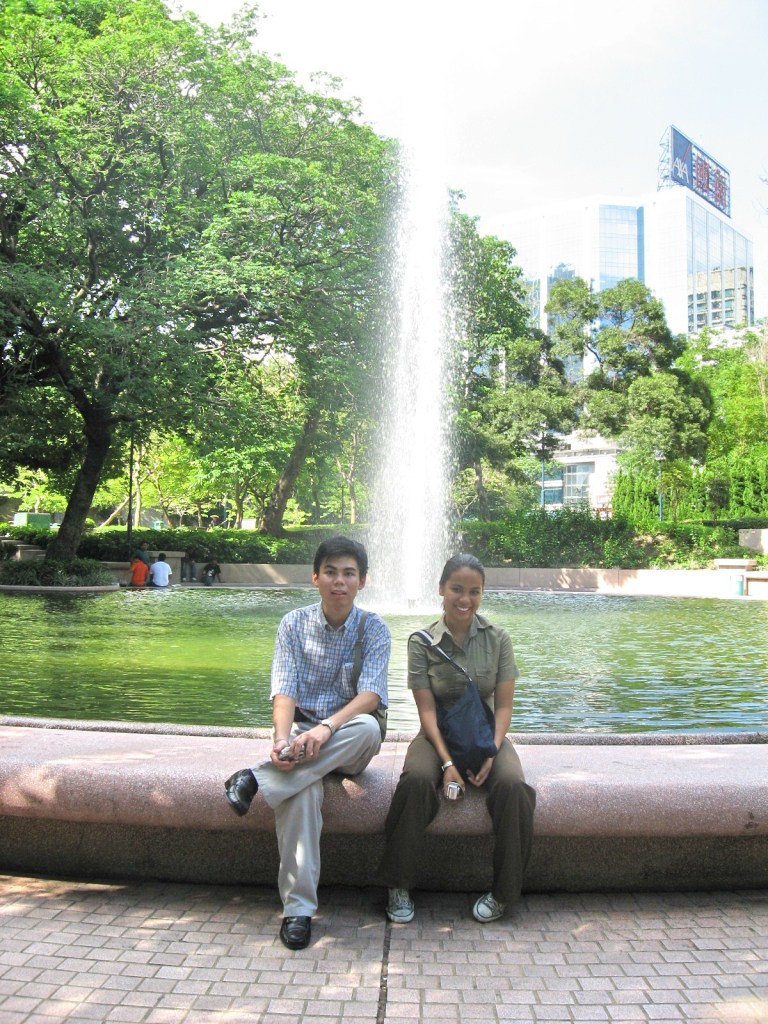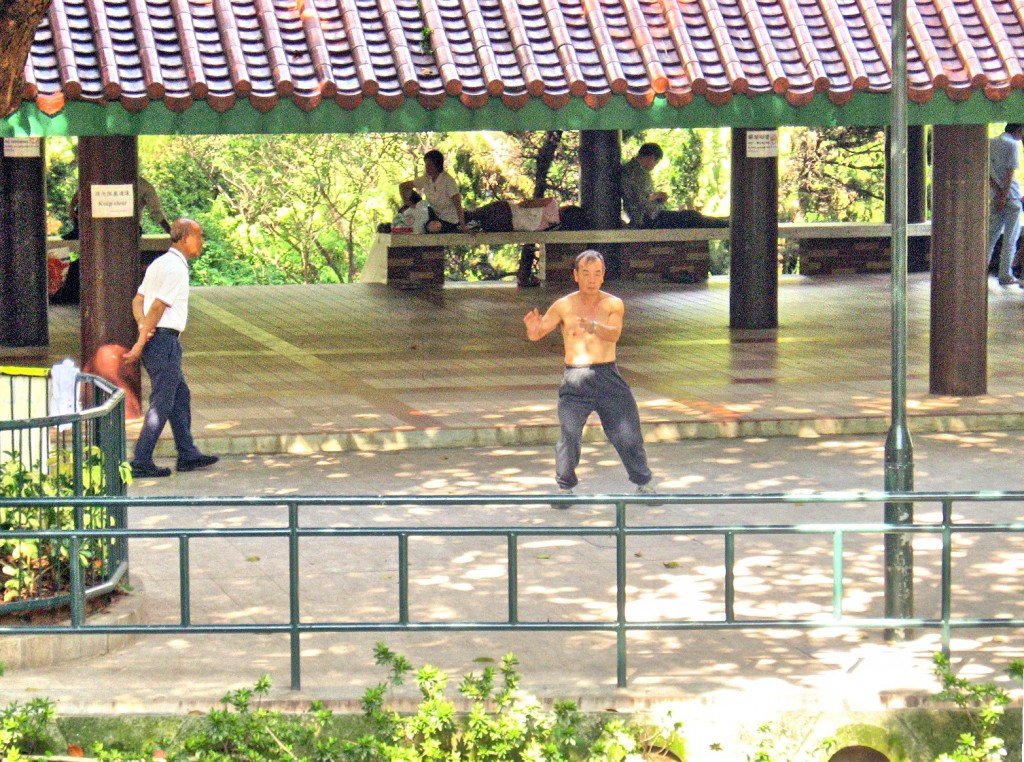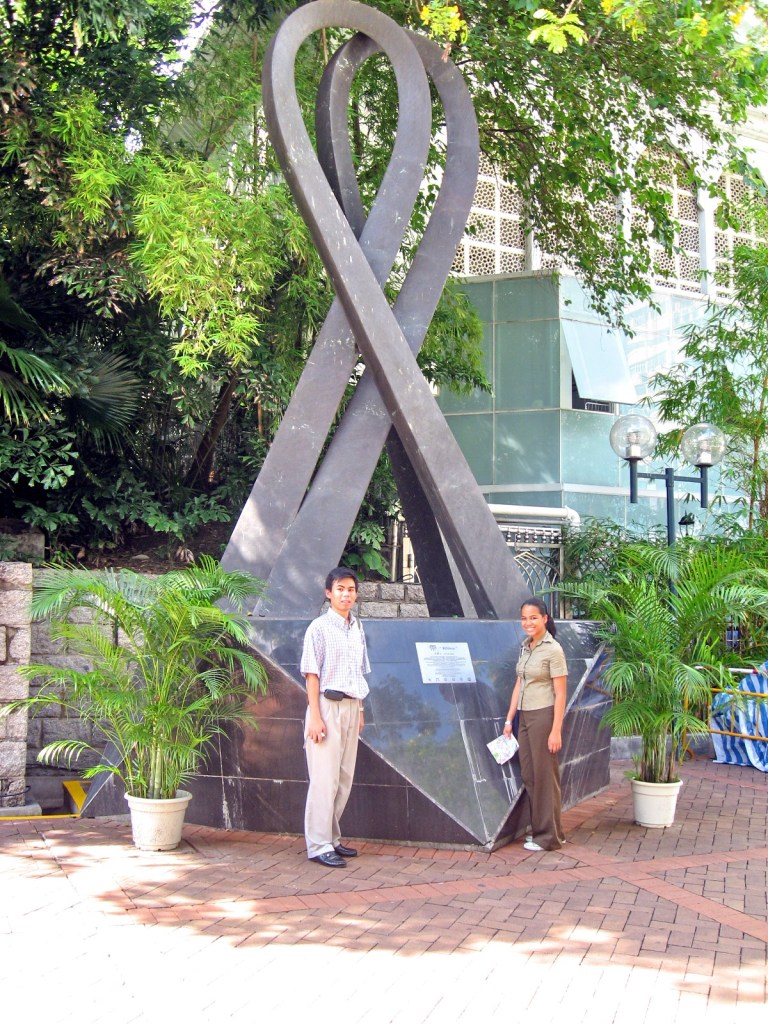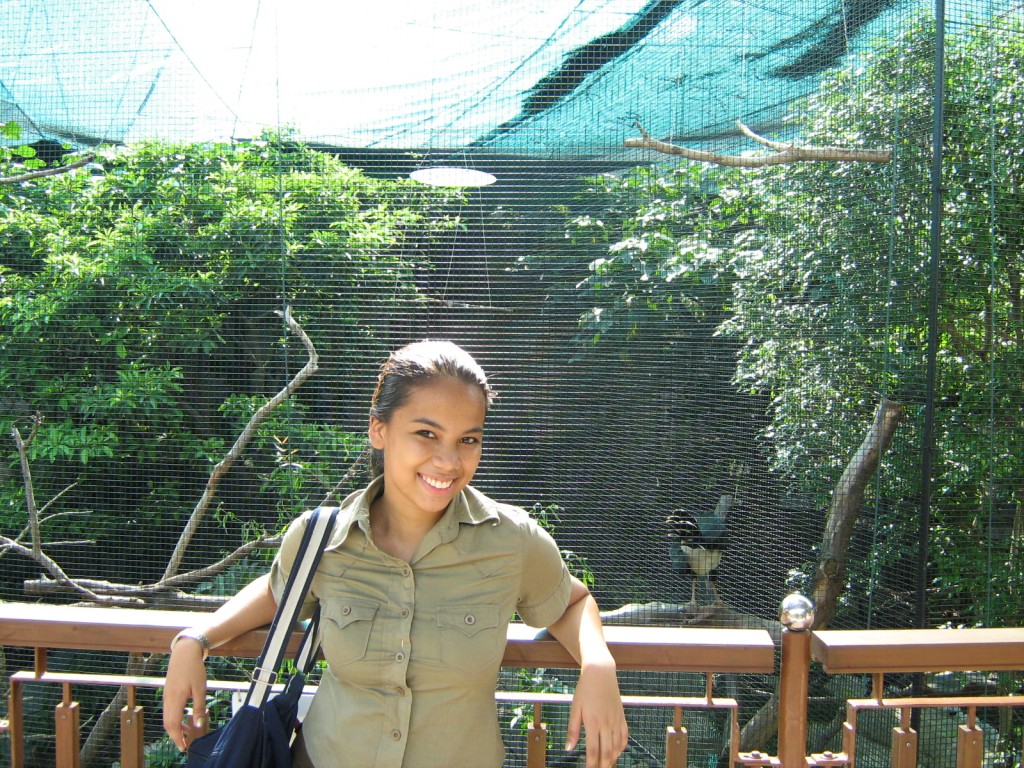After checking in at Kimberley Hotel, all of us decided to have our lunch at a restaurant along Kimberley Road. After lunch, we all returned to the hotel where Grace, Dad and Mom decided to catch up with lost sleep. Not so with me, Jandy and Cheska, deciding, instead, to do some sightseeing of our own.
From the hotel, we all walked to the nearby 13.47-hectare (33-acre) Kowloon Park. The park was formerly a site of the Whitfield Camp Barracks for the British force with a battery (Kowloon West Battery II) on its west side. In 1970, the Urban Council redeveloped the site into the Kowloon Park and it was officially opened on June 24, 1970. From 1975- 1978, part of the site was occupied in the construction of the MTR. In 1989, the park was redeveloped at a cost of $300 million, which was funded by the then Royal Hong Kong Jockey Club.
Due to topographical and other site constraints, the northern part of Kowloon Park is selected for active recreational area (Aquatics Center with 4 swimming pools, tennis courts, etc.) whereas the passive amenities area (children’s playground, aviary, Chinese Garden, Bird Lake and exhibition center) is mainly in the south. We were more interested in the latter.

Behind the Kowloon Mosque and next to the Health Education, Exhibition and Information Centre, we came upon a bronze sculpture of 2 ribbons that intertwine to form a heart, inaugurated on December 1, 1997, World AIDS Day, crafted by Van Lau, an influential Hong Kong artist responsible for many of the city’s other sculptures. It commemorates the victims and the fight against HIV/AIDS.
At the Pond Garden is the “Pool Pavilion” done by British sculptor David Watkins in 1989. This is a fabulous piece of artwork, which gives a delightful touch to the park, consists of bent parallel steel tubes joined together, taking the shape of trees. The sculpture is placed at the center of a pond and people can get through it and become part of the work themselves. The witty shapes of the tubes radiate a festive mood and it takes you right in the middle of a carnival.
The park has lots trees, beautiful gardens, plenty of paved sidewalks for walking or jogging, and a large area for concerts and special events. At the Chinese Garden, we watched various groups practicing martial arts and taichi.
It is also a haven for birdlife. The park has a nice aviary composed of 7 planted enclosures accommodating over 140 birds of 38 species (parrots, pigeons, pheasants, etc.) plus plenty of shaded areas where visitors can sit and watch the antics of the birds. There’s also a rockery, a man-made waterfall and a decorative trellis. The park also has a Bird Lake with 200 finches of 20 species.
The park also has a pair of identical, 2-storey, colonial military barrack blocks, constructed in circa 1910. Linked by an extension block constructed in the 1980s to provide more space for the former Hong Kong Museum of History from 1983 to 1998, it now houses the Hong Kong Heritage Discovery Centre.
Kowloon Park: 22 Austin Rd., Tsim Sha Tsui, Kowloon, Hong Kong. Admission is free except for Swimming Center and Sports Center. Tel: 2724 3344. Fax: 2724 4197. E-mail: kpqr@lcsd.gov.hk.
How to Get There: By subway, take Subway Tsuen Wan Line and get off at Jordan or Tism Sha Tsui station and walk to the park. By bus, take Bus No. 1, 1A, 2, 2C, 6, 6A, 7, 9, 13X, 26, 35A, 41A, 63X, 81C, 87D, 98D, 203, 208, 219X, 234X, 271, 281A, 296D or A2 and get off at Kowloon Park.












